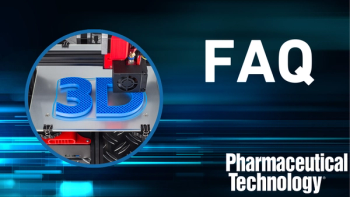
Improving Process Control and Analytical Methods for Bioprocesses
"The better we understand the relationship between process parameters and product attributes, the better control we'll have over product quality," said Beth Fowler, PhD, during Tuesday?s session on process monitoring at the AAPS Annual Meeting.
"The better we understand the relationship between process parameters and product attributes, the better control we'll have over product quality," said Beth Fowler, PhD, during Tuesday's session on process monitoring at the AAPS Annual Meeting.
Fowler updated the audience on improved methods for monitoring bioprocesses and for real-time analytical control. She charted the purposes and capabilities of current process monitoring methods and looked ahead to list desired future capabilities (see Table I). She then highlighted work in progress by Pfizer, Procognia, and Xcellerex to improve existing methods and extend their use into the "desired" group of applications.
Optical sensors for bioreactor monitoring
Fowler's company, Xcellerex, Inc. (Marlborough, MA,
www.xcellerex.com
) is developing a noninvasive tool for monitoring dissolved oxygen and pH in bioreactors, which can reduce contamination risk by reducing sampling. In the tool, optical sensors are placed behind a clear window on a bioreactor. The sensor color changes in the presence of an analyte.
The system uses fluorescent ruthenium. The wavelengths absorbed by the ruthenium change according the level of oxygen exposure. Sinosoidal modulated excitation stimulates a fluorescence phase shift, allowing the operator to plot a calibration curve. The system has demonstrated a fast response time (~30 s) and a good linear response range (10-90% dissolved oxygen), is nontoxic, and maintains integrity under irradiation.
Real-time analysis of monoclonal antibody quality
Fowler reported that Pfizer researchers presented a method at the PittCon conference this year for analyzing the product quality of monoclonal antibodies (mABs). Their method comprises four main steps: capture and quantitation of the analyte on a 96-well protein-A plate; desalting in a 96-well reverse phase plate; digestion (peptide mapping) in a 96-well PPE plate; and glycopeptide preparation (glycopeptide enrichment).
Initial performance data for the method were good: recovery was >95% for levels above 50 ug/mL; and the relative standard deviation was
Newsletter
Get the essential updates shaping the future of pharma manufacturing and compliance—subscribe today to Pharmaceutical Technology and never miss a breakthrough.





